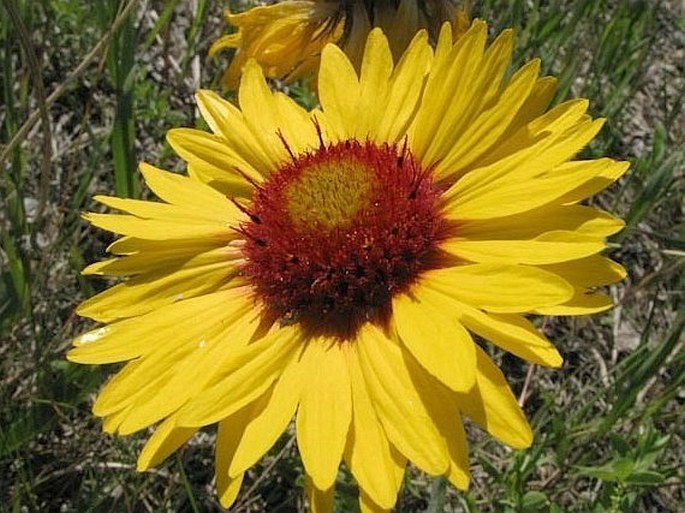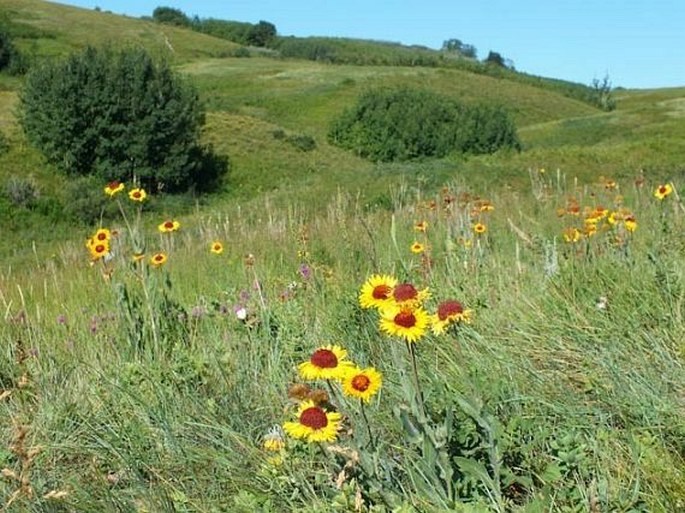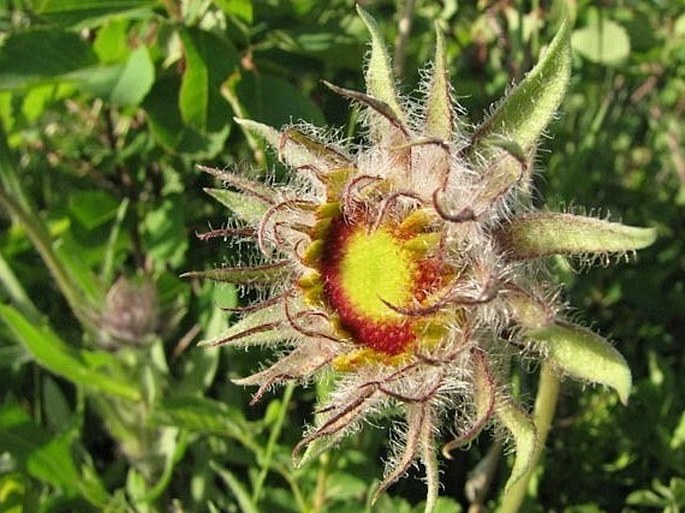Syn.: Gaillardia bicolor var. aristata (Pursh) Nutt.
Family: Asteraceae Bercht. et J. Presl

Distribution: Species of Northwest of North America found from Yukon to Oregon, Colorado and Minnesota.
Ecology: Grows in open dry and sunny localities, forest margins and bushes, in prairie, sand, in elevations from 200 to 2900 m. Blooms from May to August.

Description: Perennial herb, 20–80 cm tall from slender taproot. Alternate leaves, lower ones stalked, upper ones stalkless, 5–15 cm long, 0.5–4 cm wide, margins coarsely toothed, oblong to lance-shaped, hairy. Flower heads borne singly on long stalks, heads 3–7 cm across; disc florets numerous (60–120), crimson; ray florets (6–)12–18, yellow, purplish red at base, wedge-shaped, 3–5 lobed; bracts green, hairy, in 2–3 overlapping rows. Fruit is an achene with long stiff hairs, pappus of 5–10 bristly scales.
Use: Plants of genus Gaillardia are grown in gardens of all continents as perennials or annuals, usually listed as Gaillardia ×grandiflora, thus hybrids of possibly G. aristata with other species as G. pulchella. These hybridized plants sometimes escape into environment (Mikulov, Czechia).
Note: The genus contains about 15–17 species, all from North and South America.






These images were taken in Canada, Alberta, Calgary, Nose Hill Park (2013).


